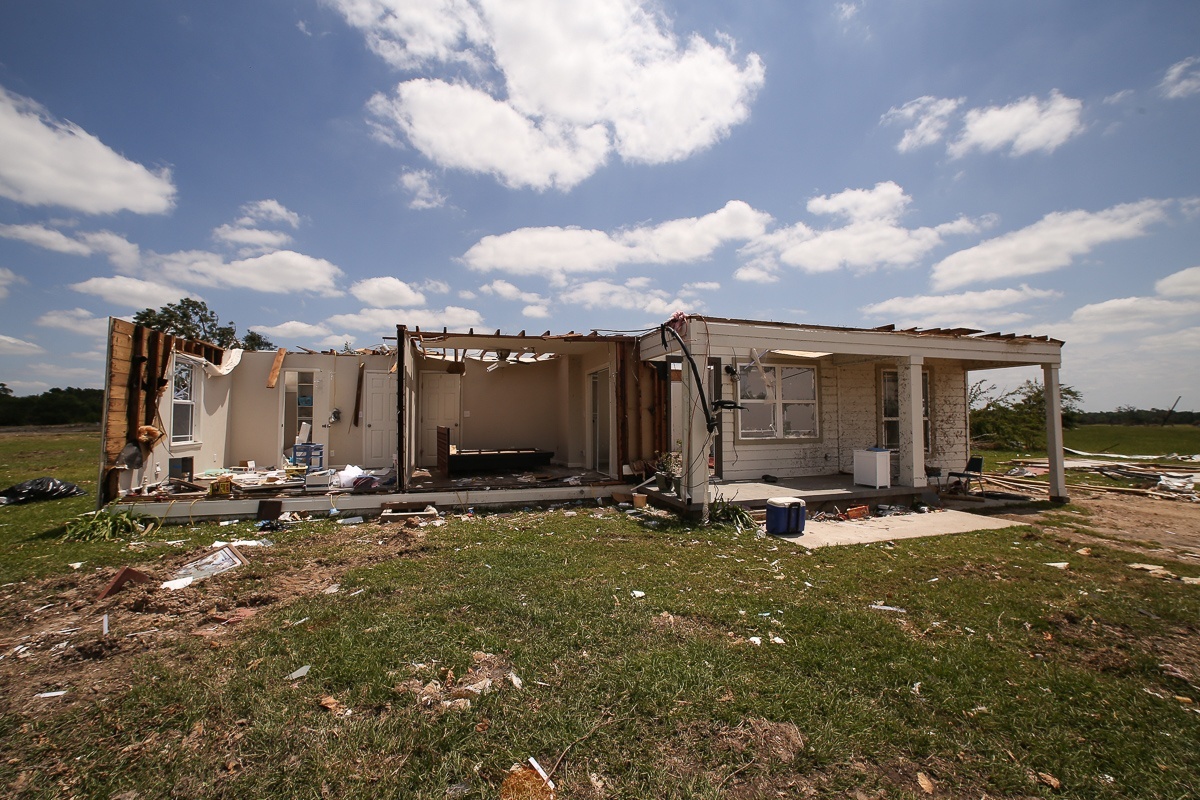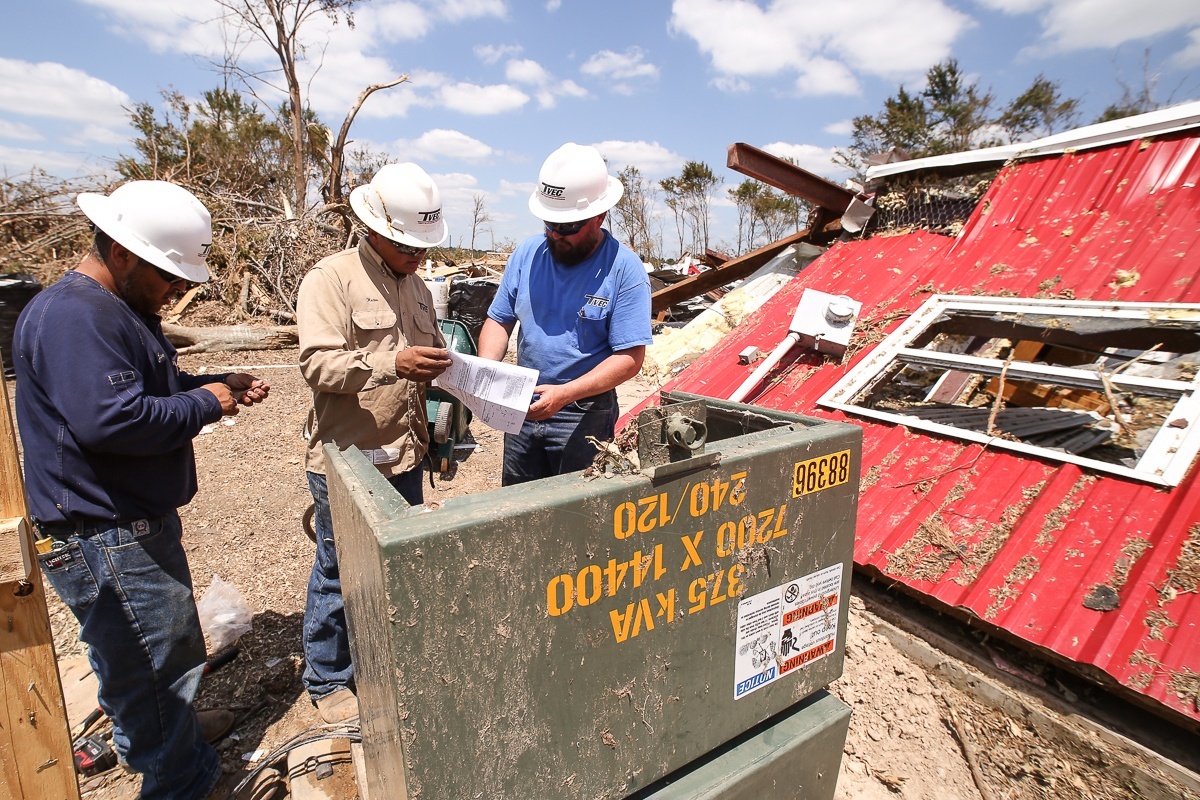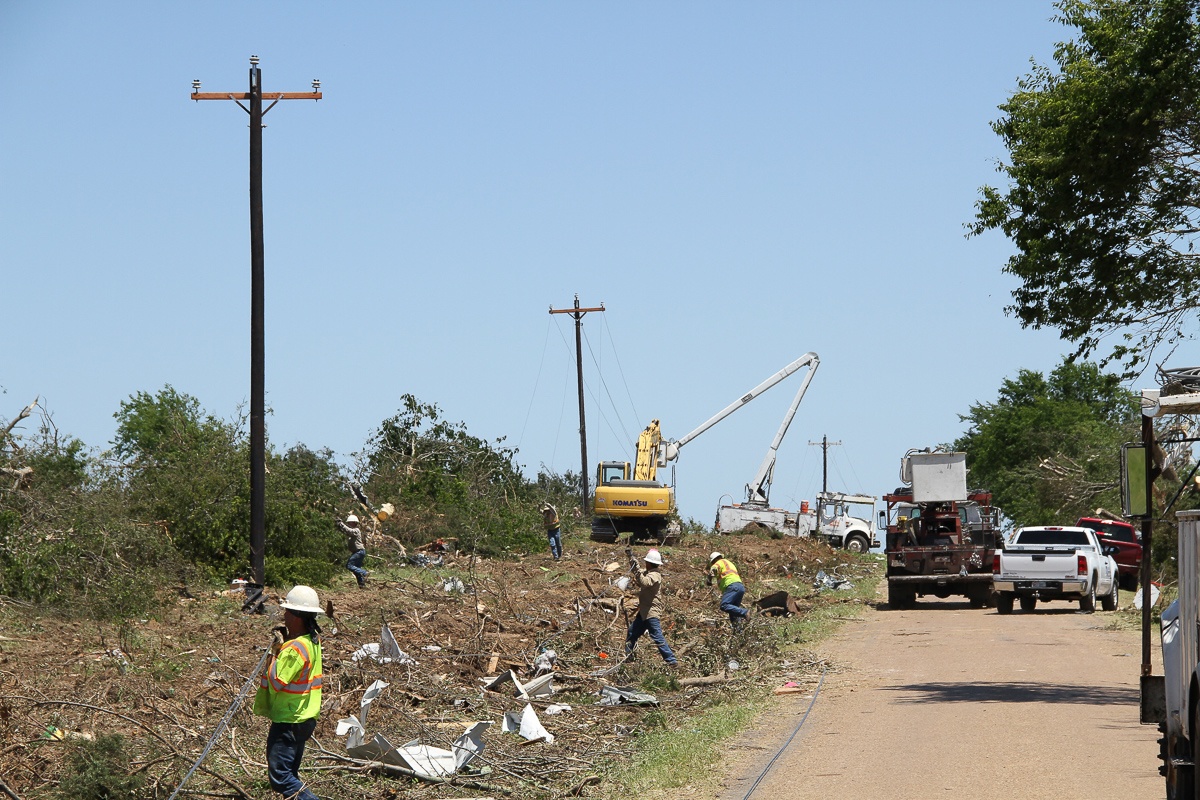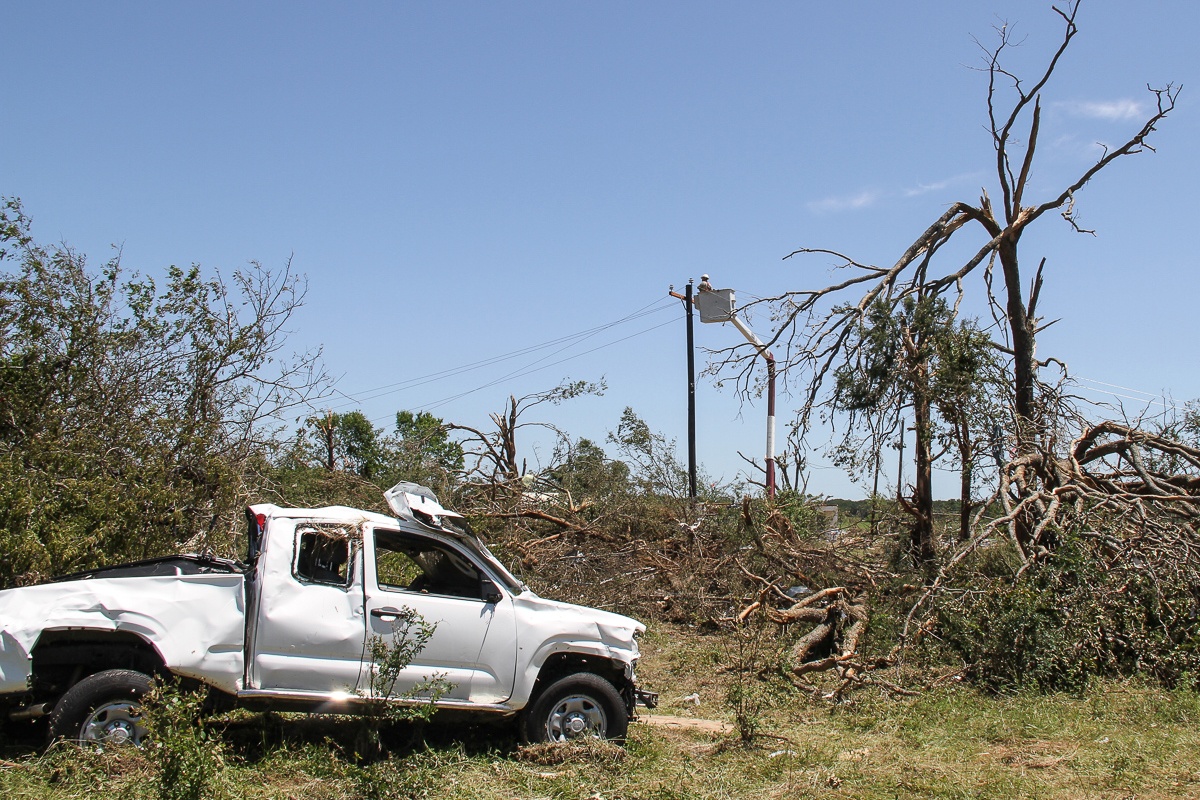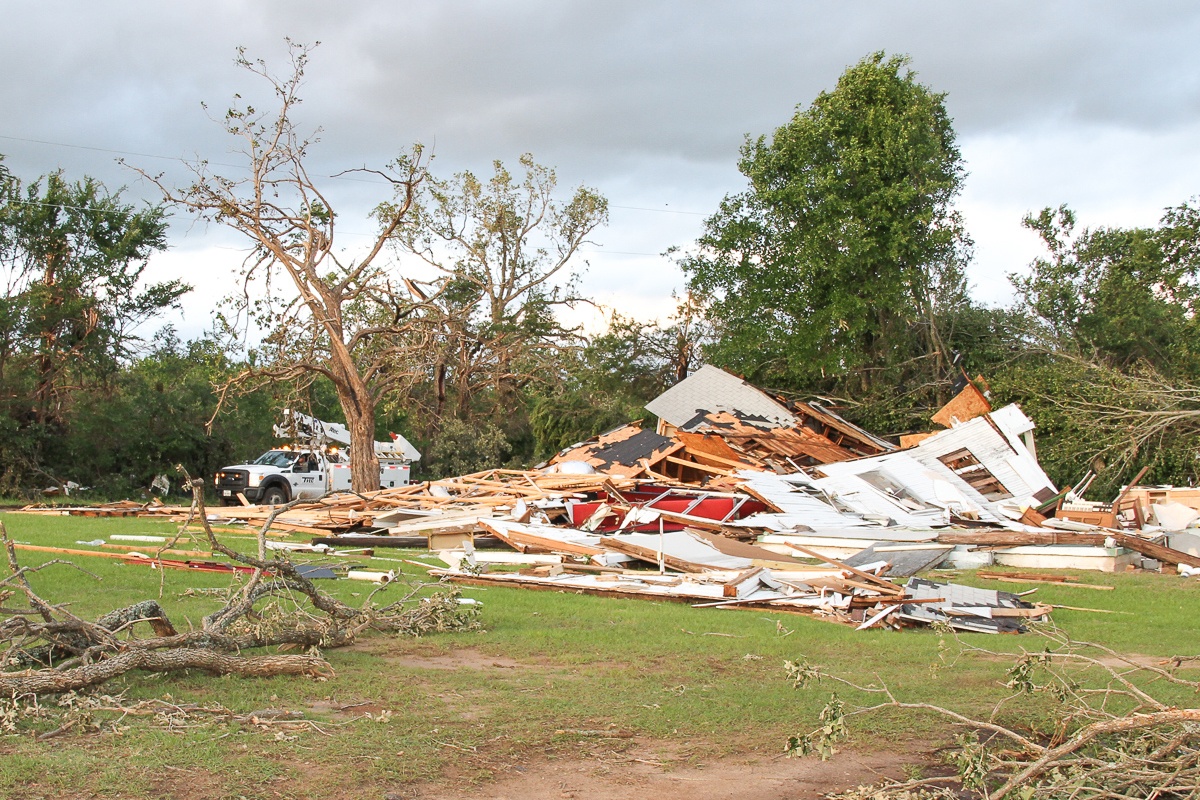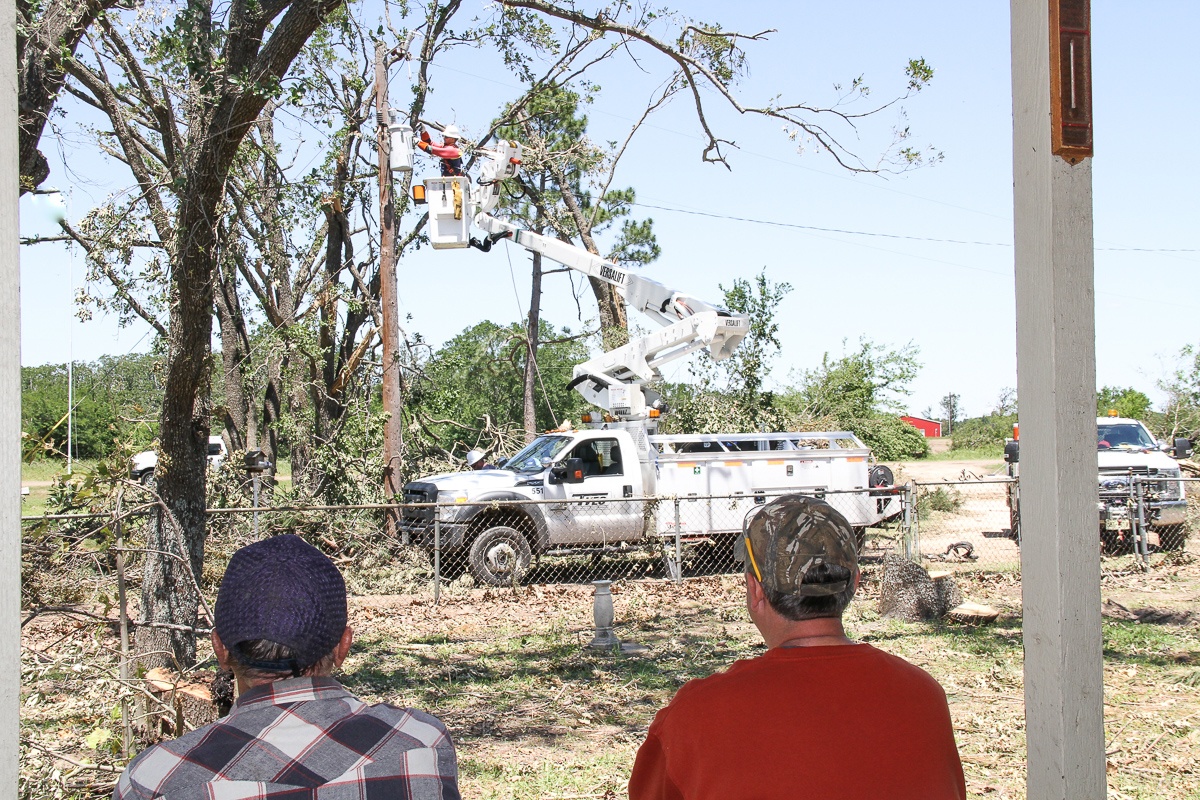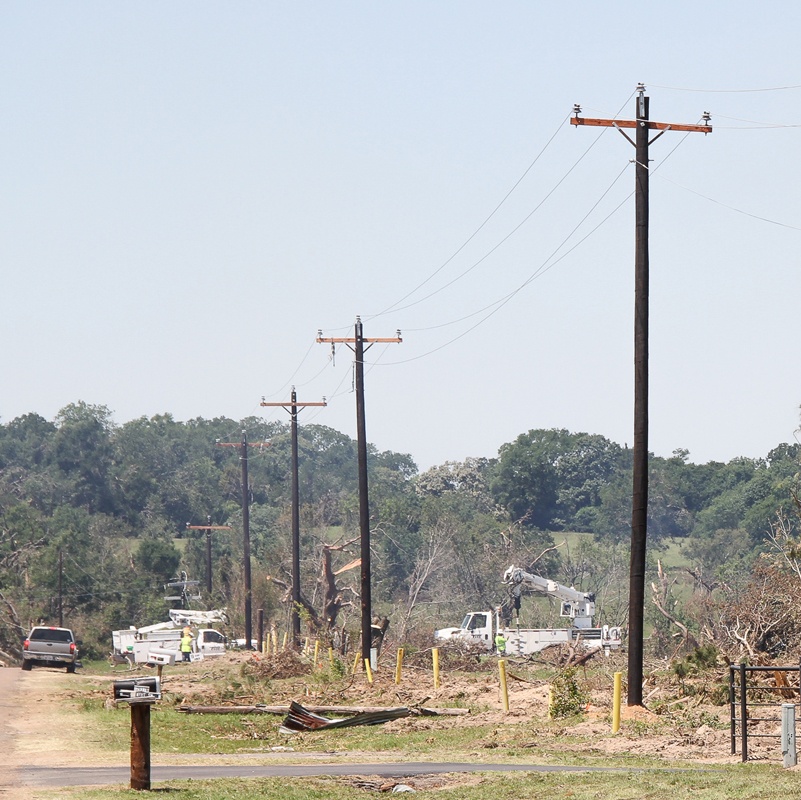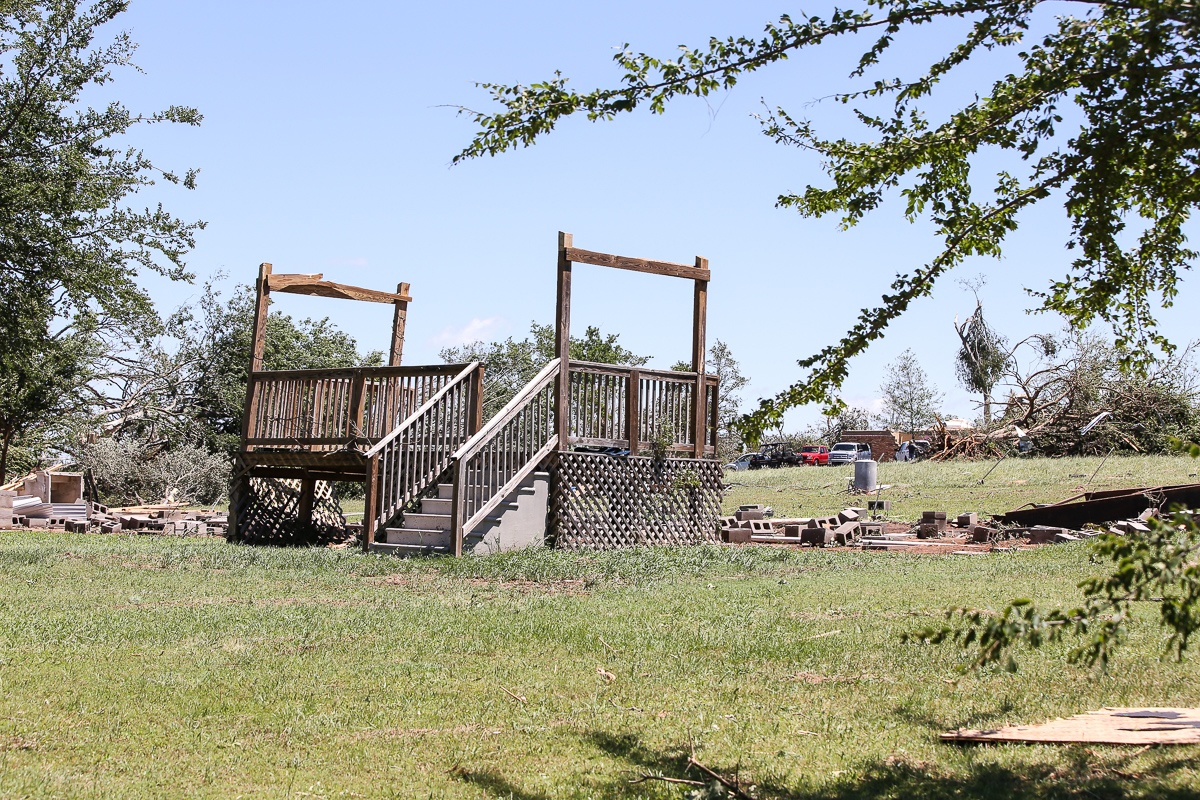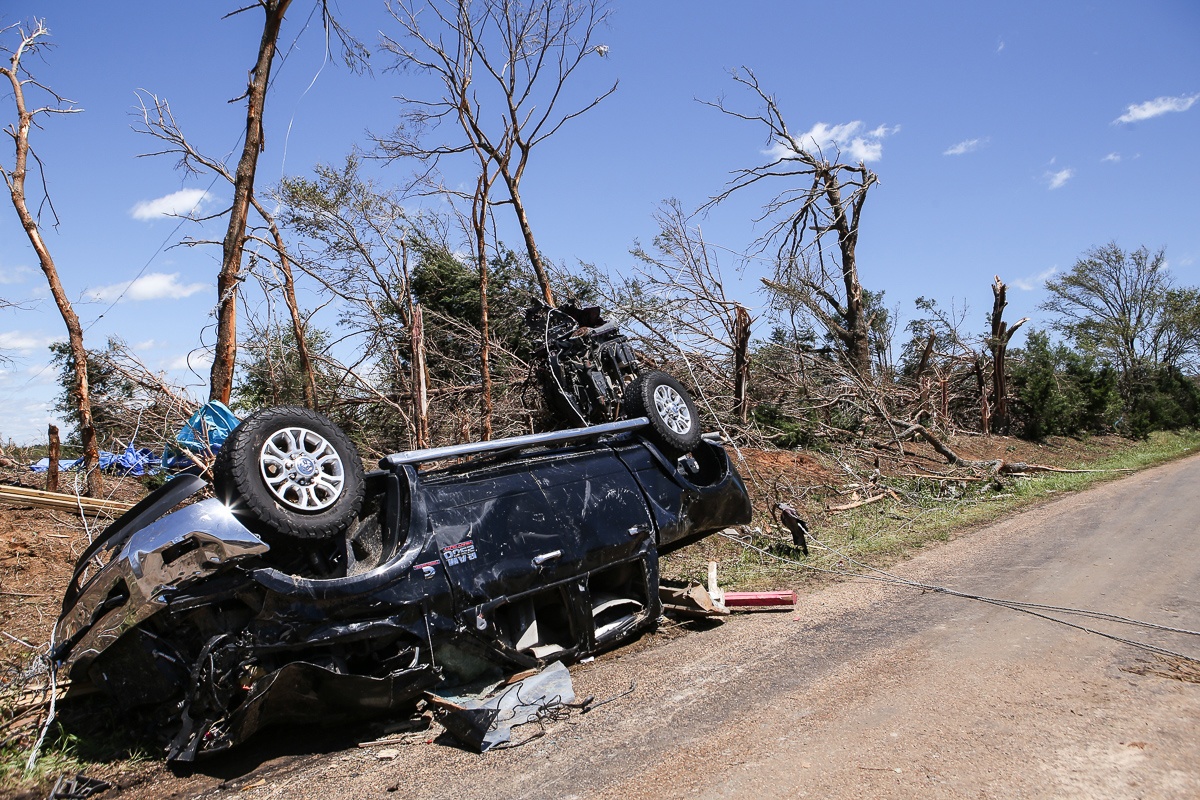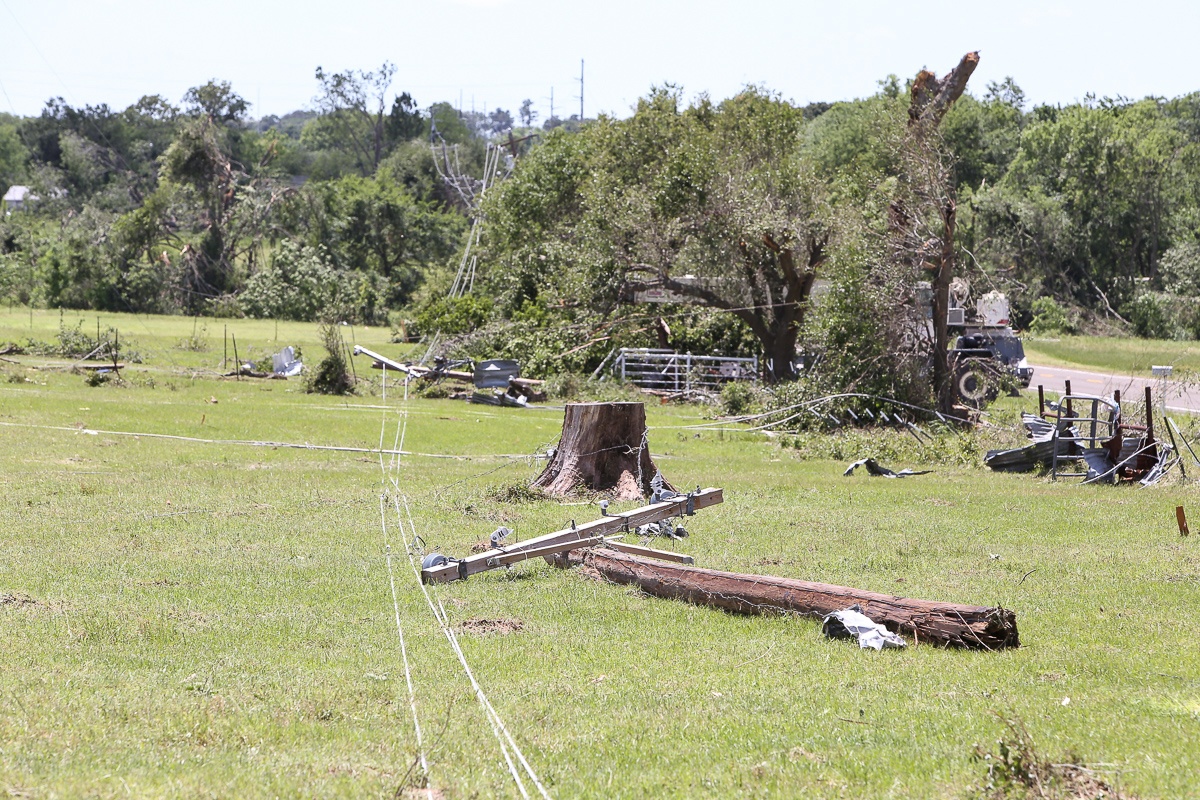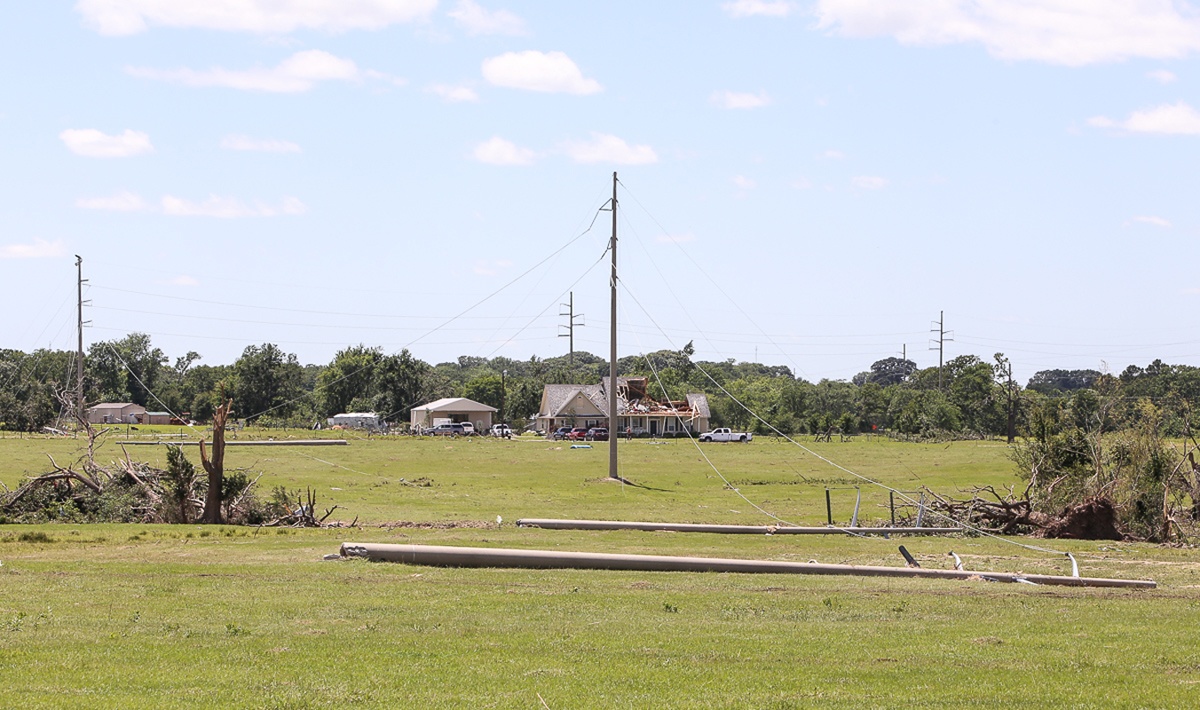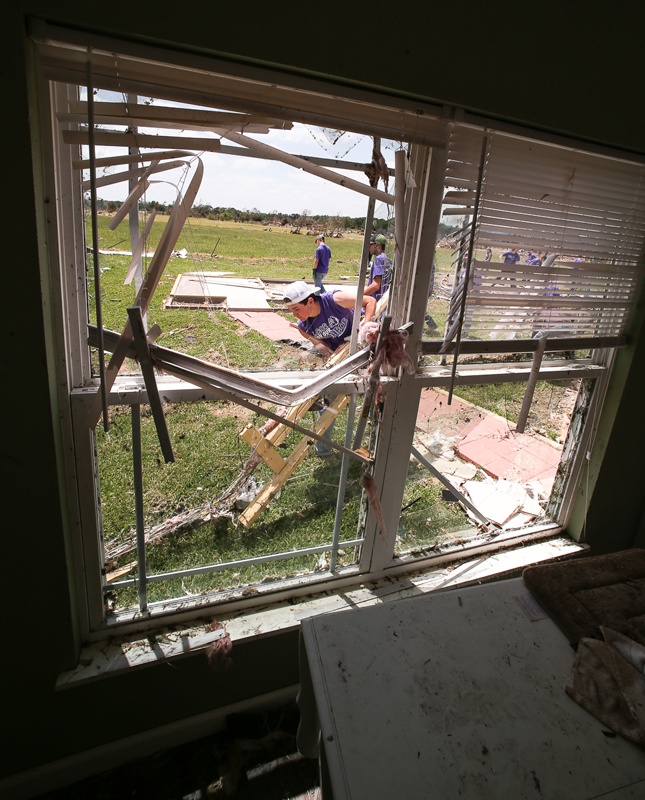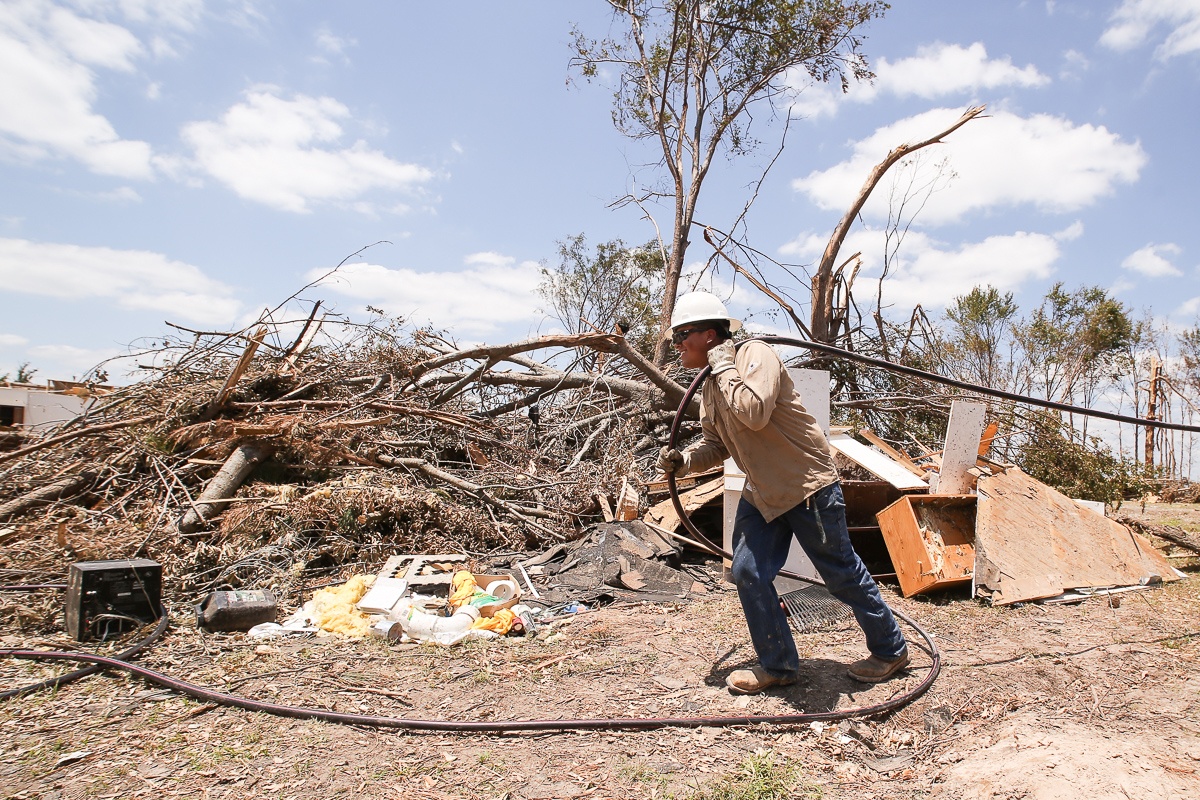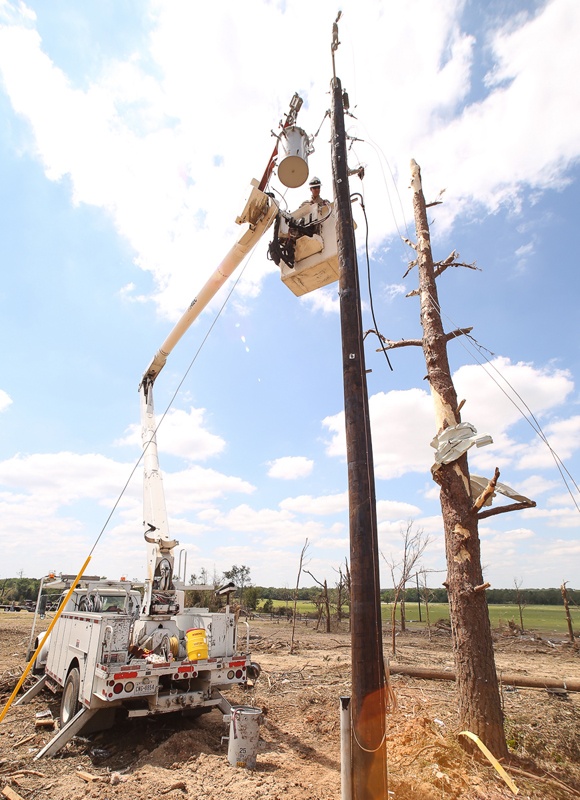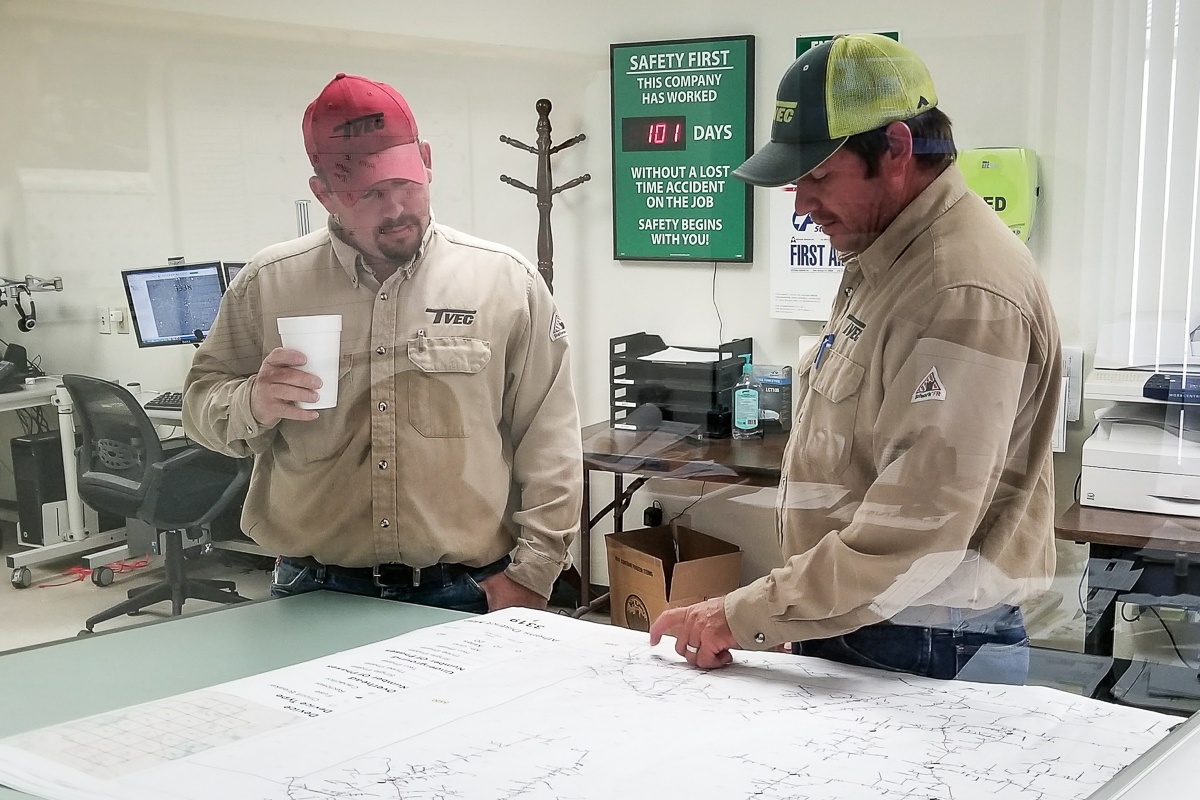Paying attention to the weather is part of the job for everyone at Trinity Valley Electric Cooperative, but by early afternoon on April 29, the predicted strong storms had failed to materialize. By early evening however, a series of tornados tore holes through the middle of the TVEC service area and beyond. Stretching from Eustace in the south to well past Canton in the north, more than 50 miles of destruction reduced homes to rubble, killed four people and injured dozens more.
As the extent of the damage became clear, the TVEC response changed from normal storm outage restoration to full-blown disaster recovery mode.
Working the Plan and Planning the Work
“We fall back to the disaster recovery plan,” said TVEC Operations Manager Rodney Wesley. “This is what we have practiced for, and every storm is a form of this on a smaller scale, but for this you get everyone moving, start to assess what it will take and then start making calls to bring in what we are going to need.”
The immediate needs included clearing fallen poles from roadways and opening switches to ensure that downed lines were not energized.
“A tornado does so much damage so quick, and this is the worst I’ve seen since I’ve been here,” said lineman Josh Lathem. “A lot of that mess was in the roads, and you have to clear the roads first, just to get emergency vehicles and ambulances through there.”
As darkness fell, TVEC staff began laying the groundwork for an all-out effort to determine the extent of the damage, locate the necessary resources and putting together a game plan for restoring power as quickly and safely as possible.
The exact damage was still unknown, but more than 23,000 TVEC members would be without power that night, in an area served by five electric substations, each cut off from their power source by the storm. Ninety-foot concrete transmission towers and heavy-gauge wire were no match for the high winds and flying debris.
“This got us on both sides,” said TVEC Chief Operating Officer Tony Watson. “Usually you can isolate the damage and get power back on from other areas. If it had not been for that, we probably could have had 15,000 back on Sunday. We practice disaster recovery scenarios, but this tested us.”
A helicopter inspection on Sunday courtesy of Mr. Dekkers at Twin Lakes sped up the assessment, allowing TVEC engineers and transmission personnel to have the necessary pieces expedited directly to damage locations. With plans underway for getting the substations back up and running, crews of lineman worked at breakneck pace to have as much distribution line back in service when the power came back on.
Reinforcements
With almost 300 poles to replace, more than 15 miles of line to run and a lot of obstacles in the way, it was time to invoke Co-op Principle #6, “Cooperation Among Cooperatives.” In any major storm, electric cooperatives from around the state are key allies in providing resources for areas with damaged lines.
As calls went out, crews rolled in adding some 200 workers to the effort. Behind the scenes, the support and logistics functions were also rolling, securing lodging, meals, fuel and material support to keep everyone busy.
“From the outside, it probably looks like chaos, but it is controlled chaos,” Wesley said. “The information flow from our member services department is coming in and the supervisors are paying attention to everything and watching out for each other. And I can’t say enough about our dispatchers … they keep everyone safe when the power is starting to come back on.”
Within the framework of the disaster recovery plan, TVEC many staffers took on roles outside their normal job descriptions. Reaching out to members who were affected by the storm brought home just how devastating the storm had been.
“I was returning outage calls to members who had used phone numbers that our system did not recognize,” said Stacie Clark, an administrative assistant in the TVEC operations department. “One that I called, he just said, ‘Yes ma’am, my house is completely gone.’ and that is horrible. You don’t expect that.”
With the workforce in the field more than tripled, technology played a key role in the coordination and flow of information. Location tagging for individual pole damage and Advanced Meter Infrastructure (AMI) systems gave immediate information for the people managing the flow of supplies, allowing for efficient dispatching of men and materials.
Community Support
Disasters can bring out the best in people, and TVEC members were generous in supporting recovery efforts. From encouragement on social media to a constant flow of water and snacks to the crews in the field, it was plain to see that the rural spirit that led co-ops in the 1930s could still rise in support of a common cause.
“That really touched all of us. The outpouring of community is hard to explain, but you really saw that they knew that the work was critical to getting everything back to normal,” said TVEC General Manager/CEO Jerry Boze. “I think the outpouring from the community energizes all of us who are part of the recovery and the support was just amazing”
Out in the field, the kind words provided an extra boost during the long days of grueling labor.
“The community support, the comments on Facebook, those guys love seeing that—it really keeps them going,“ Wesley said. “They know that our members come first, and there was no complaining on our side. Everybody had one job in mind which was getting the lights back on and being safe, and they did those two things.”
Looking Forward
Permanent repairs for Transmission lines and the many connections to homes and business that will have to be rebuilt will be ongoing for months. The cost will be hard to tabulate exactly, and for those who lost homes and loved ones, the losses are immeasurable. In whatever way possible we must look forward and find ways to learn from the experience of the storm.
“We have a mixture of youth and experience on our crews, with the experienced ones having helped with tornados, Hurricane Katrina, Hurricane Rita and things like that—they know what it takes,” said Wesley. “In storms like this the younger guys see what it is like and carry that on. Every storm is a training ground and every time they have proved themselves. I’m amazed at what they got accomplished.”
